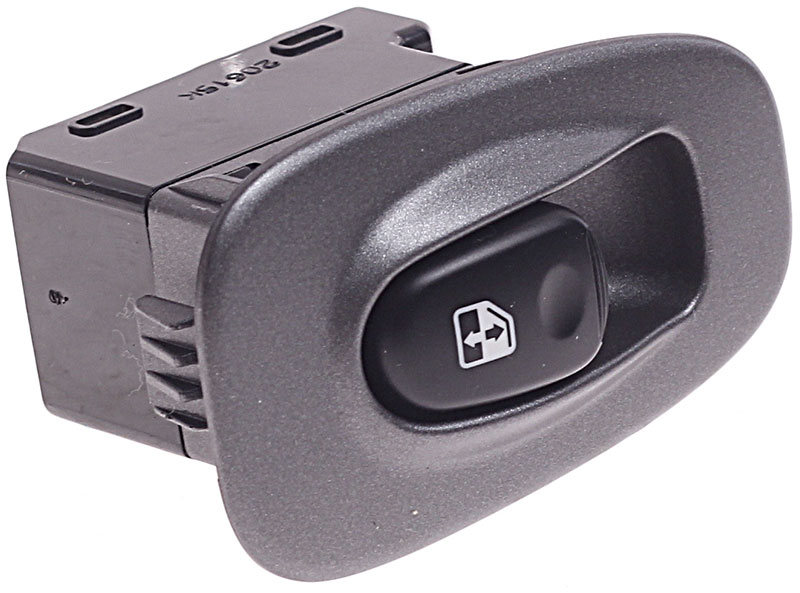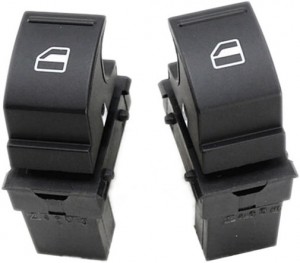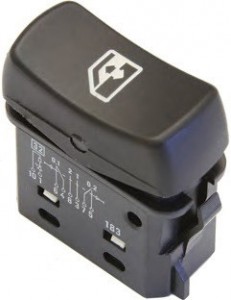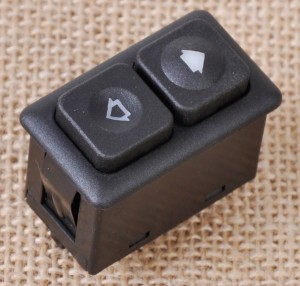
Today, fewer and fewer cars with mechanical windows are produced - they have been replaced by electric ones, controlled by buttons on the doors. Everything about power window switches, their design features and existing types, as well as the right choice and replacement - read this article.
What is a power window switch?
Power window switch (power window switch, power window switch) - a module of the electrical control system for the power windows of a vehicle; A switching device in the form of a button or a block of buttons for controlling individual or all electric windows built into the doors.
Switches are the main switching elements of the car's comfort system - power windows. With their help, the driver and passengers can control the power windows, adjusting the microclimate in the cabin and for other purposes. The breakdown of these parts deprives the car of a significant part of comfort, and in some situations makes it difficult to operate (for example, with faulty direction indicators and a power window on the driver's side, it becomes impossible to perform gesture signaling of maneuvers). Therefore, the switch must be replaced, and in order to make the right choice, you should understand the design and features of these devices.
Types, design and functionality of power window switches
First of all, it should be pointed out that today two types of devices are used on cars to control power windows:
● Switches (switches);
● Control units (modules).
Devices of the first type, which will be discussed further, are based on power switches, they directly control the power supply circuits of power windows and do not have any additional functionality. Devices of the second type can also be equipped with power switches, but most often they are electronically controlled and implemented in a single electronic system of the car via the CAN bus, LIN and others. Also, the control units have additional functionality, including can be used to control the central locking and rear-view mirrors, block windows, etc.
Power window switches differ in the number of switches and applicability:
● Single switch - for installation directly on the door where the power window is located;
● Two switches - for installation on the driver's door in order to control the power windows of both front doors;
● Four switches - for installation on the driver's door in order to control the power windows of all four doors of the car.
Several different switches may be present in one car. For example, two or four switches are usually installed on the driver's door at once, and single buttons are placed only on the front passenger door or on the front passenger door and both rear doors.
Structurally, all power window switches are quite simple. The device is based on a three-position key switch:
● Non-fixed position "Up";
● Fixed neutral position ("Off");
● Non-fixed "Down" position.
That is, in the absence of impact, the key switch is in the neutral position and the window regulator circuit is de-energized. And in non-fixed positions, the window regulator circuit is closed for a while while the button is held with your finger. This provides simpler and more convenient operation, since the driver and passenger do not need to press the button several times to open or close the window by the desired amount.
In this case, the buttons may differ in design and type of drive:
● A key button with non-fixed positions in the horizontal plane is a regular key in which non-fixed positions are located in the horizontal plane next to the middle fixed position;
● The button with non-fixed positions in the vertical plane is a lever-type button in which the non-fixed positions are located in the vertical plane at the top and bottom relative to the fixed position.
In the first case, the key is controlled by simply pressing your finger on one or the other side of it. In the second case, the key must be pressed from above or pryed from below, such a button is usually located in a case with a niche under the finger.

Switches with non-fixed position in the vertical axis

Switch with non-fixed positions in the horizontal plane
However, today there are more complex designs in the form of dual buttons for controlling one power window. This switch uses two separate buttons with a non-fixed position - one for lifting the glass, the other for lowering. These devices have both their advantages (you can use not one switch for three positions, but two identical inexpensive buttons) and disadvantages (two buttons can be pressed at once), but they are used less often than those described above.
The switch can be installed in a plastic case of one design or another - from the simplest clip to a complete unit with an individual design that is integrated into the car door. Most often, the body has a neutral design in black, which is suitable for most modern cars, but the switch can also have an individual design for installation only in a certain model range or even in one car model. The case, together with the buttons, is held in the door with latches, less often additional fasteners in the form of screws are used.
On the back of the case or directly on the button there is a standard electrical connector for connecting to the electrical system. The connector can have one of two versions:
● The block is directly on the body of the device;
● A block placed on a wiring harness.
In both cases, pads with knife (flat) or pin terminals are used, the pad itself has a protective skirt with a key (a protrusion of a special shape) to prevent erroneous connection.
Power window switches carry more or less standardized pictograms - usually a stylized image of a car door window opening divided into two halves with a vertical bidirectional arrow or with two oppositely directed arrows. But designations in the form of arrows on both sides of the button can also be used. There are also switches with the inscription "WINDOW", and the letters "L" and "R" can be additionally applied to the dual switches to indicate the side of the door in which the window is opened with this button.
Correct selection and installation of the power window switch
The selection and replacement of the window regulator switch in most cases is simple and does not require special knowledge. It is best to use only those devices that were installed on the car earlier - so there is a guarantee that the installation will be done quickly, and the system will immediately work (and for new cars this is the only possible option, since when selecting a part with a different catalog number, you can lose the warranty). The search for switches for domestic cars is greatly facilitated by the fact that many models use the same types of switches from one or more manufacturers.
If the switch is needed for the installation of an electric window instead of a manual one, then you need to proceed from the desired functionality, the supply voltage of the on-board network and the design features of the cabin. It makes sense to take a double or quadruple switch on the driver's door, and ordinary single buttons on the rest of the doors. Also, when buying switches, you may need to purchase a new connector that will have the necessary pinout.

Power window switch with dual button
Replacement of the part must be carried out in accordance with the instructions for repairing the car. Usually, this operation is reduced to dismantling the old switch (by snapping off the latches and, if necessary, unscrewing a pair of screws) and installing a new one in its place. When performing repairs, remove the terminal from the battery, and during installation, make sure that the electrical connector is connected correctly. If the repair is performed correctly, the power window will start working normally, ensuring the comfort and convenience of the car.
Post time: Jul-14-2023
